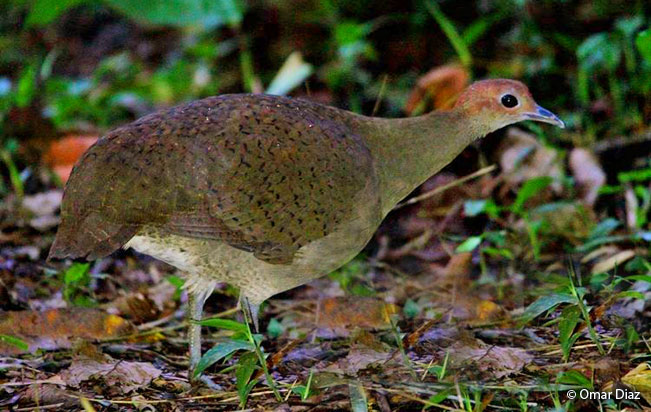Tinamus Major Percautus: The Great Tinamou Of Central America
Share
The Great Tinamou, scientifically known as Tinamus major, is a fascinating bird species belonging to the order Tinamiformes and the family Tinamidae. This article delves into the characteristics, habitat, behavior, and conservation status of the subspecies Tinamus major percautus, providing a comprehensive overview of this remarkable bird.
Taxonomy and Classification
The Great Tinamou is classified under the following taxonomic hierarchy:
- Order: Tinamiformes
- Family: Tinamidae
- Species: Tinamus major
- Subspecies: percautus
- Type: Tinamus major percautus Van Tyne, 1935
This subspecies was first described in 1935, with its type locality being Uaxactun, Peten, Guatemala. The classification reflects its unique characteristics and geographical distribution.
Physical Characteristics
The Great Tinamou is a medium-sized bird, typically measuring between 30 to 40 cm in length. It has a robust body, short neck, and a small head. The plumage is generally brownish with intricate patterns that provide excellent camouflage in its forest habitat. The underparts are lighter, and the bird has a distinctive rounded tail.

Habitat
Tinamus major percautus thrives in wet tropical forests, primarily found in southeastern Mexico, including extreme southern Veracruz, Tabasco, southern Campeche, and adjacent parts of Quintana Roo. Its range extends into northern Guatemala (Peten) and Belize (British Honduras). The bird prefers dense undergrowth and areas with abundant leaf litter, which provide cover and foraging opportunities.

Diet
The diet of the Great Tinamou consists mainly of seeds, fruits, and leaves. It forages on the forest floor, using its strong legs to scratch through the leaf litter in search of food. The bird plays a crucial role in seed dispersal, contributing to the health and regeneration of its forest ecosystem.

Behavior
The Great Tinamou is known for its secretive nature, often remaining hidden among the dense foliage. It is primarily a ground-dwelling bird, although it can fly short distances if necessary. The bird is most active during the early morning and late afternoon, when it ventures out to forage.
Vocalizations are an essential aspect of its behavior, with males producing a series of low, booming calls that can be heard over long distances. These calls are particularly prominent during the breeding season, serving to attract females and establish territory.

Reproduction
The breeding season for the Great Tinamou typically occurs during the rainy season, when food is abundant. Males engage in elaborate courtship displays, which include vocalizations and physical displays to attract females. After mating, the female lays a clutch of eggs in a shallow nest on the ground, often hidden under dense vegetation. The male takes on the responsibility of incubating the eggs and caring for the chicks once they hatch.
Conservation Status
The Great Tinamou is currently classified as Least Concern by the IUCN Red List. However, habitat loss due to deforestation and agricultural expansion poses a significant threat to its population. Conservation efforts aimed at preserving tropical forests are crucial for the survival of this species and its habitat.
Birdwatching Tips
For birdwatchers interested in observing the Great Tinamou, the best locations are the wet tropical forests of southeastern Mexico and northern Guatemala. Early morning and late afternoon are ideal times for spotting these elusive birds. Patience and quiet observation are key, as the Great Tinamou is known for its secretive behavior.
Final Thoughts
The Great Tinamou, particularly the subspecies Tinamus major percautus, is a remarkable bird that plays a vital role in its ecosystem. Its unique adaptations and behaviors make it a fascinating subject for ornithologists and birdwatchers alike. Protecting its habitat is essential for ensuring the continued survival of this intriguing species, allowing future generations to appreciate its beauty and ecological significance.
